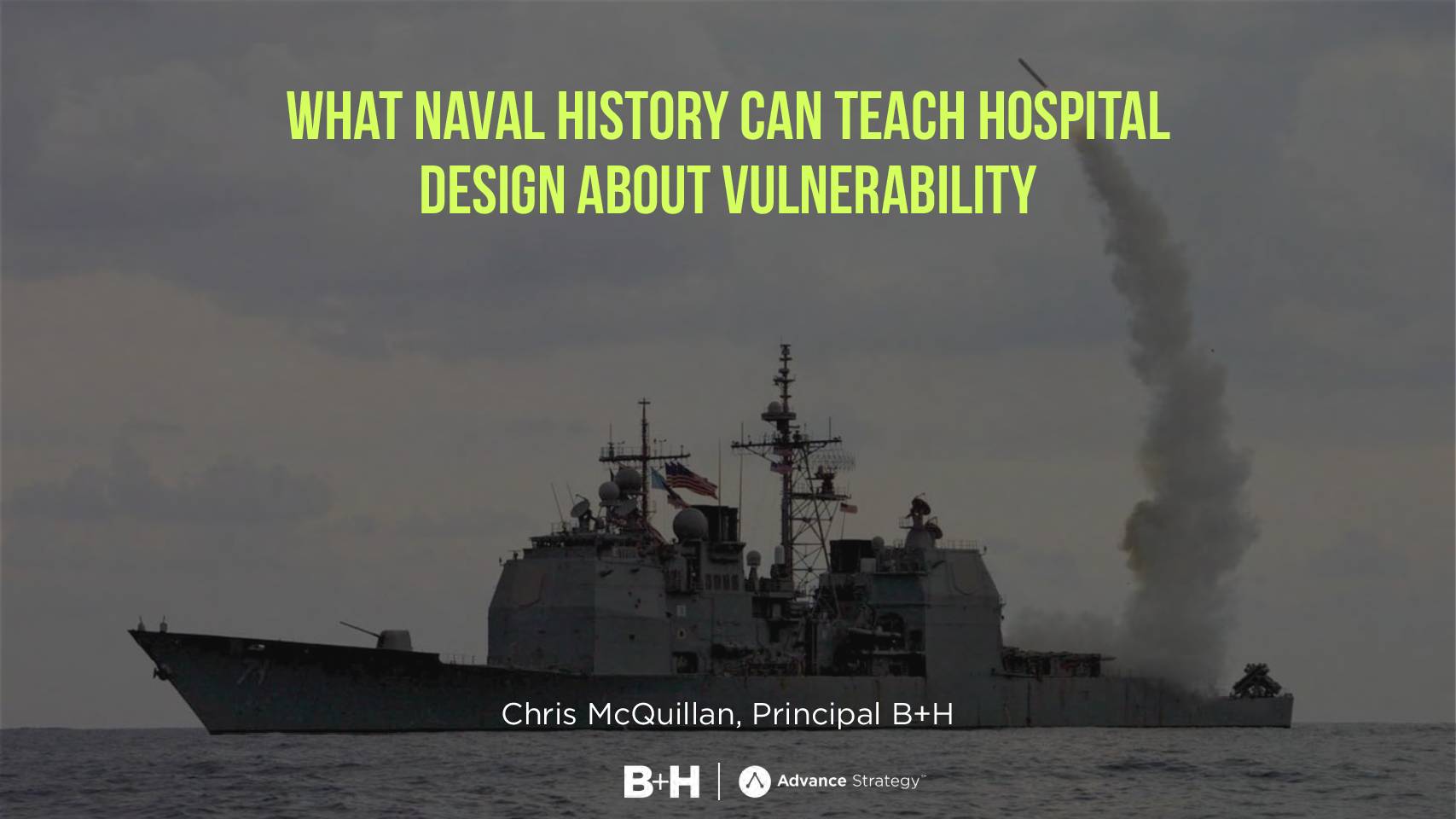What can naval history teach hospital design about vulnerability?
Building a more resilient, adaptive healthcare ecosystem
Presented by: Chris McQuillan, Principal at the European Healthcare Design Conference, 2020
History is littered with many sharp transitions at times when context, conditions and challenges render yesterday’s solutions obsolete.
Over the decades we’ve seen investments in bigger, more technologically endowed hospitals that take advantage of economies of scale to deliver more care per dollar. They concentrate more care into ever larger centres to help more patients and caregivers access current tools, technologies and knowledge. These vanguard facilities were besieged by COVID-19.
Rapid 19th century technological advancements gave rise to the mighty modern battleship. By the mid-20th century the Japanese “Yamato” class exceeded 850’ in length, could reach 30mph and possessed 18” artillery. It was considered invincible. Yet submarine warfare in WW1 exposed battleships as too slow and their weaponry ill-adapted to combat a submerged enemy; their design was adapted in response. Then came another new threat – the airplane. The battleship made for a very large target. Many sailors aboard battleships in WW2 died, as did the battleship itself. One could argue that the battleship was the ‘billion dollar’ white elephant of the second world war.
COVID-19, SARS, H1N1 and the next unnamed virus or resistant bacterial pathogen present a similarly unforeseen and fundamentally different challenge to our healthcare system. Our “battleships,” super-hospitals packed with the best technologies, sitting low in the water, are vulnerable to attack from pathogens carried by the very patients they seek to treat and the caregivers who treat them.
